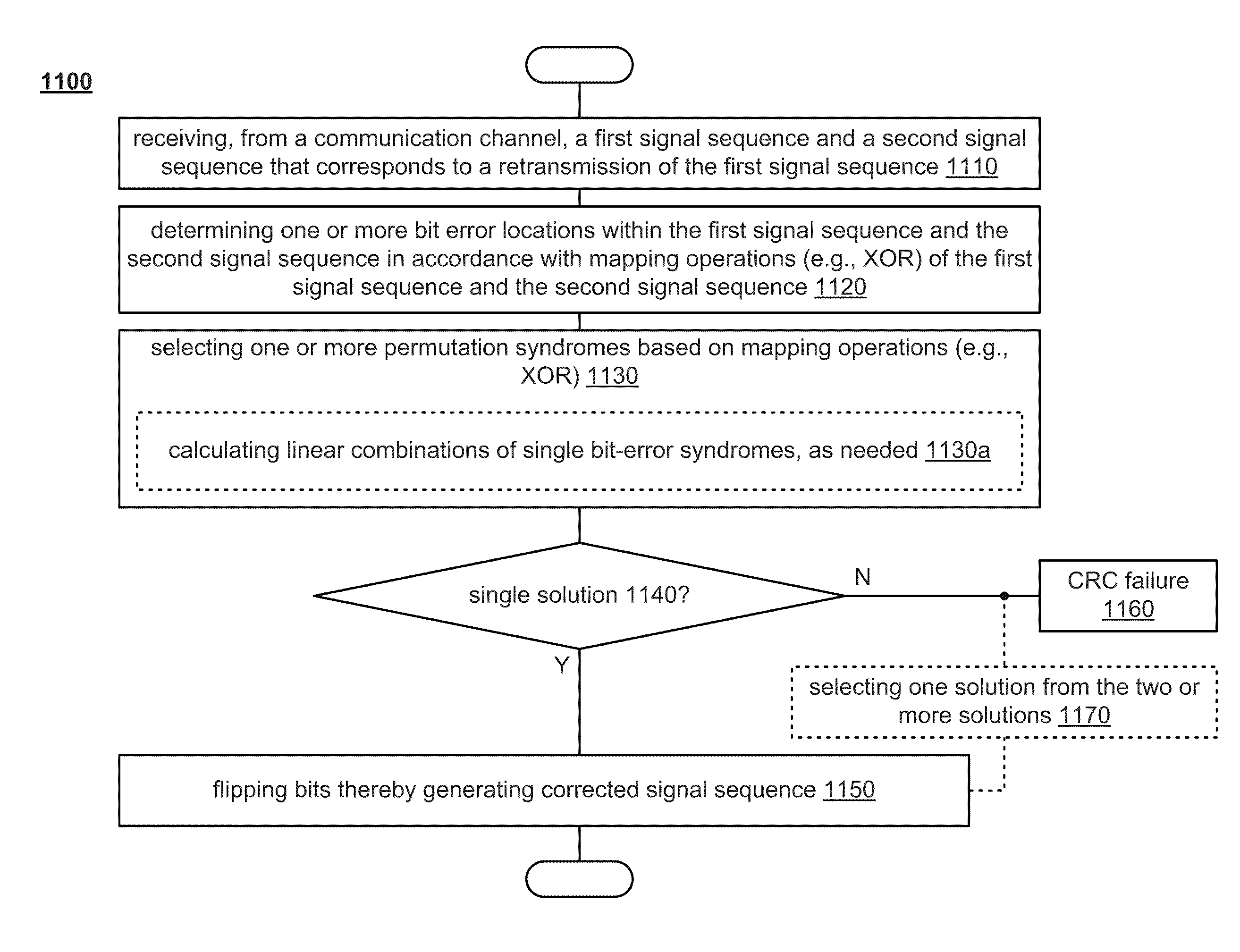Low complexity error correction using cyclic redundancy check (CRC)
a low-complexity, error correction technology, applied in the field of communication systems, can solve the problems of limitless bound in the desire, still does not provide adequate means,
- Summary
- Abstract
- Description
- Claims
- Application Information
AI Technical Summary
Benefits of technology
Problems solved by technology
Method used
Image
Examples
embodiment 700
[0096]FIG. 7 illustrates an embodiment 700 of one or more possible errors located within redundant signal sequences. As described in several of the embodiments herein, aspects of the error correction approach presented herein operate in accordance with redundant signal sequences (e.g., at least one additional signal sequence that is a redundant transmission, or a retransmission, of another signal sequence).
[0097]The response by many receiving communication devices to a failed CRC is to request a retransmission of the same data (e.g., to request at least one additional redundant transmission of the previously received signal sequence). Each time that the CRC fails, the receiving communication device may request a retransmission from a sending communication device up to some configurable or predefined limit (e.g., L retransmissions). Hence, if upon the final retransmission, the CRC still fails, the receiving communication device then has L copies of the same data transmitted stream / si...
embodiment 900
[0118]FIG. 9 illustrates an embodiment 900 of possible values that may be calculated to correct for errors located within redundant signal sequences. Certain of the previous embodiments relate to situations in which either one or two bit errors may be located in each stream. However, there may be instances where more than two bit errors may occur in each stream. A stream showing 5 bits is depicted in this diagram (e.g., b1, b2, b3, b4, b5). Of course, a stream including more or less than 5 bits may alternatively be employed without departing from the scope and spirit of the invention. This diagram shows the large number of linear combinations of predetermined values that may be needed in a given embodiment (e.g., for use in comparing with the calculated CRC remainder based on the most likely (or potential) error locations within the received signal(s), such as may be determined using XOR processing, soft information, etc.).
[0119]Considering the situation for which a singular bit err...
PUM
 Login to View More
Login to View More Abstract
Description
Claims
Application Information
 Login to View More
Login to View More - R&D
- Intellectual Property
- Life Sciences
- Materials
- Tech Scout
- Unparalleled Data Quality
- Higher Quality Content
- 60% Fewer Hallucinations
Browse by: Latest US Patents, China's latest patents, Technical Efficacy Thesaurus, Application Domain, Technology Topic, Popular Technical Reports.
© 2025 PatSnap. All rights reserved.Legal|Privacy policy|Modern Slavery Act Transparency Statement|Sitemap|About US| Contact US: help@patsnap.com



